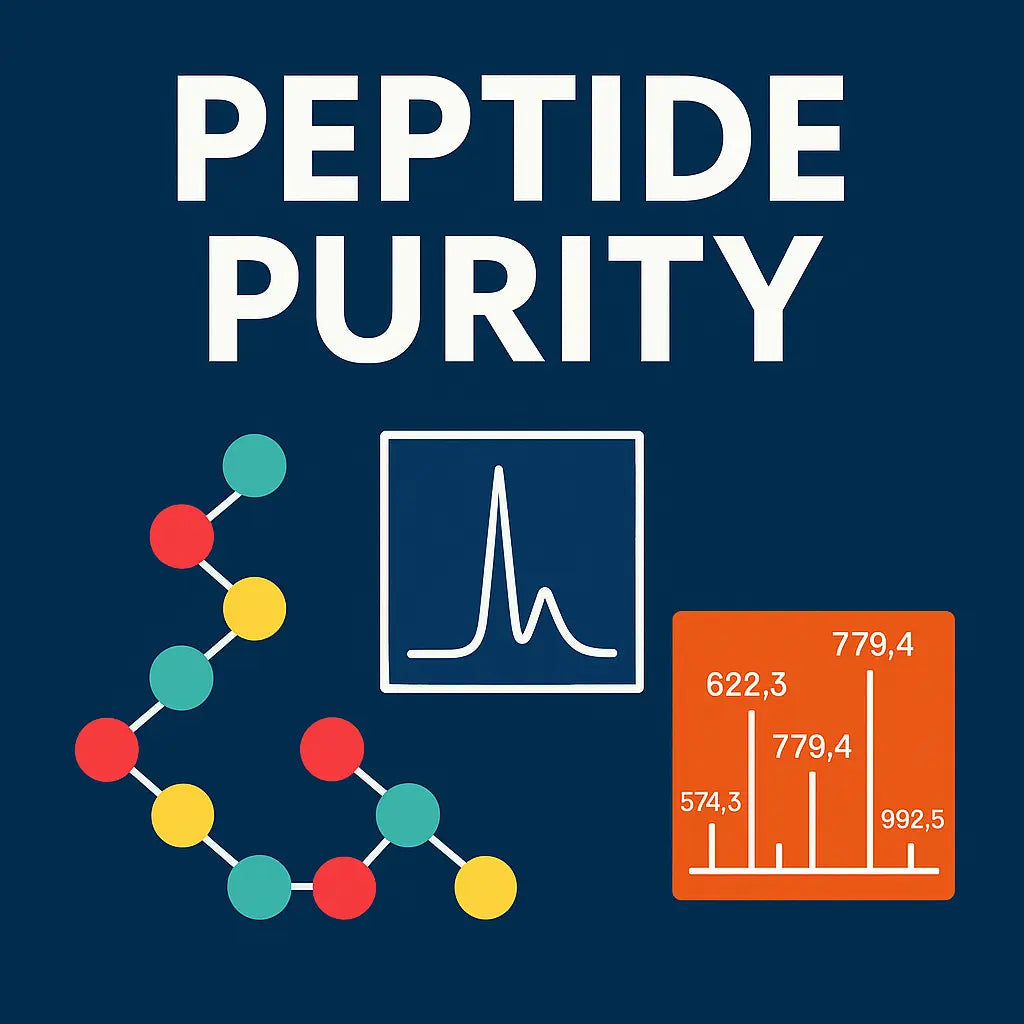
Peptide Purity | Testing Methods & Recommended Standards
Share
How Is Peptide Purity Achieved and Verified?
Peptide purity refers to the percentage of the target peptide present in a preparation compared to unwanted by-products or contaminants. Achieving high levels of purity is critical for reliable and reproducible research results. At Everwell Peptides, purity is achieved through precise synthesis methods, rigorous quality control, and advanced analytical testing.
Modern peptide synthesis technologies—including solid-phase peptide synthesis (SPPS) and solution-phase synthesis—allow for exact control of peptide assembly. After synthesis, each preparation undergoes multiple rounds of testing to confirm purity and structural accuracy.
HPLC and Mass Spectrometry Testing
Two gold-standard analytical techniques are commonly used to confirm peptide purity and identity:
- High-Performance Liquid Chromatography (HPLC): This technique separates components in a mixture, allowing researchers to quantify the percentage of the target peptide and identify impurities. It provides a clear, highly accurate purity profile.
- Mass Spectrometry (MS): By ionizing molecules and sorting them according to their mass-to-charge ratio, MS precisely verifies peptide molecular weight and sequence integrity. The resulting data offers a unique “fingerprint” for each peptide, ensuring accurate identification.
By combining HPLC with MS, researchers obtain a full picture of peptide quality, ensuring both purity and structural fidelity.
Recommended Peptide Purity Levels
The ideal level of peptide purity depends on the intended research application. While Everwell Peptides emphasizes extremely high-purity products (≥99%), acceptable purity levels can vary:
High Purity Peptides (>95%)
Typically required for highly sensitive or quantitative applications, including:
- In vitro studies
- Preclinical and clinical research
- Cosmetic and dermatological peptide studies
- Protein crystallography
- Quantitative receptor–ligand interaction studies
- Enzyme kinetics and protease assays
- ELISA and RIA protocol standards
Mid-Range Purity (>85%)
Often sufficient for semi-quantitative or exploratory studies, such as:
- Western blot blocking studies
- NMR spectroscopy investigations
- Epitope mapping
- Phosphorylation pathway research
- Biological activity assays
Lower Purity Peptides (>70%)
Generally reserved for applications where absolute purity is less critical:
- Peptide arrays
- Antibody production (polyclonal or affinity purification)
- ELISA standards for antibody titer measurements
Importantly, higher-purity peptides can always be used in applications that require lower thresholds, but not vice versa. This is why Everwell Peptides prioritizes ultra-pure sequences that exceed 99% purity, suitable for even the most demanding studies.
This content is provided for educational purposes only. All peptides are sold for research and laboratory applications only, and are not for human or veterinary consumption.

